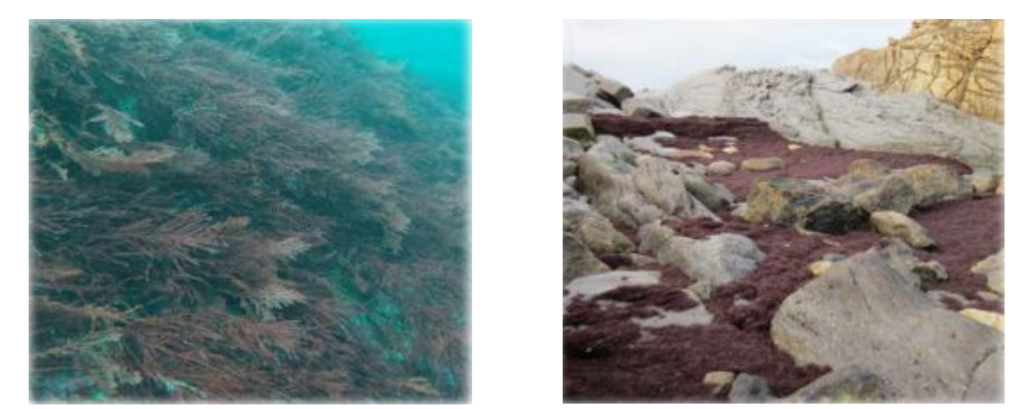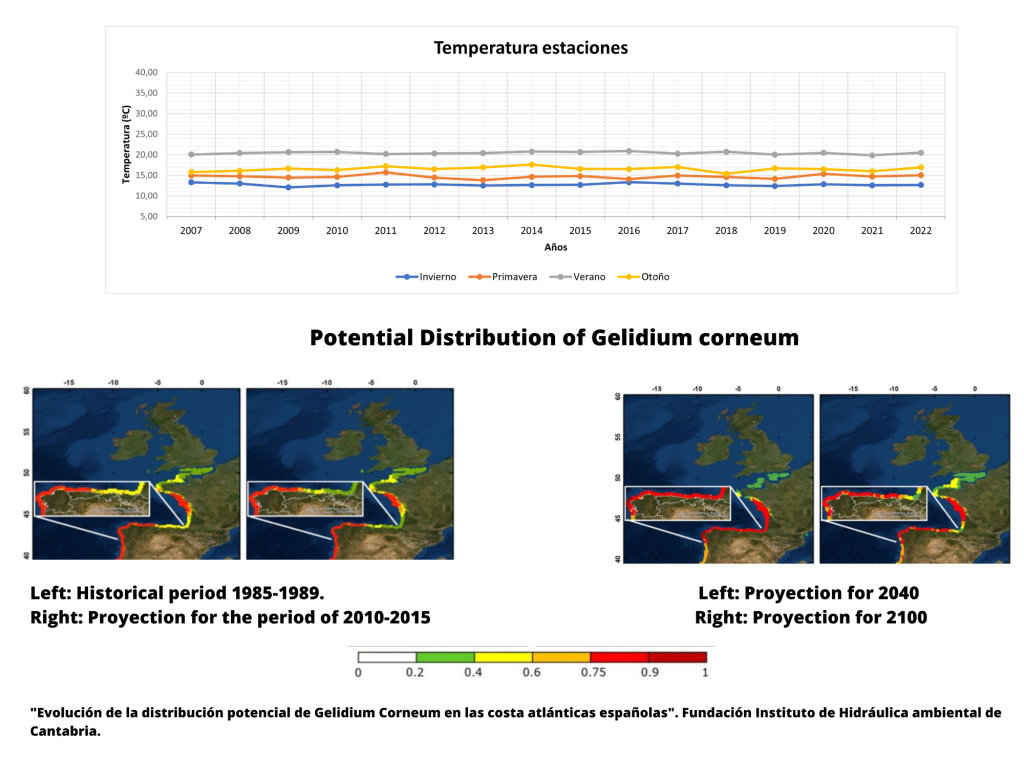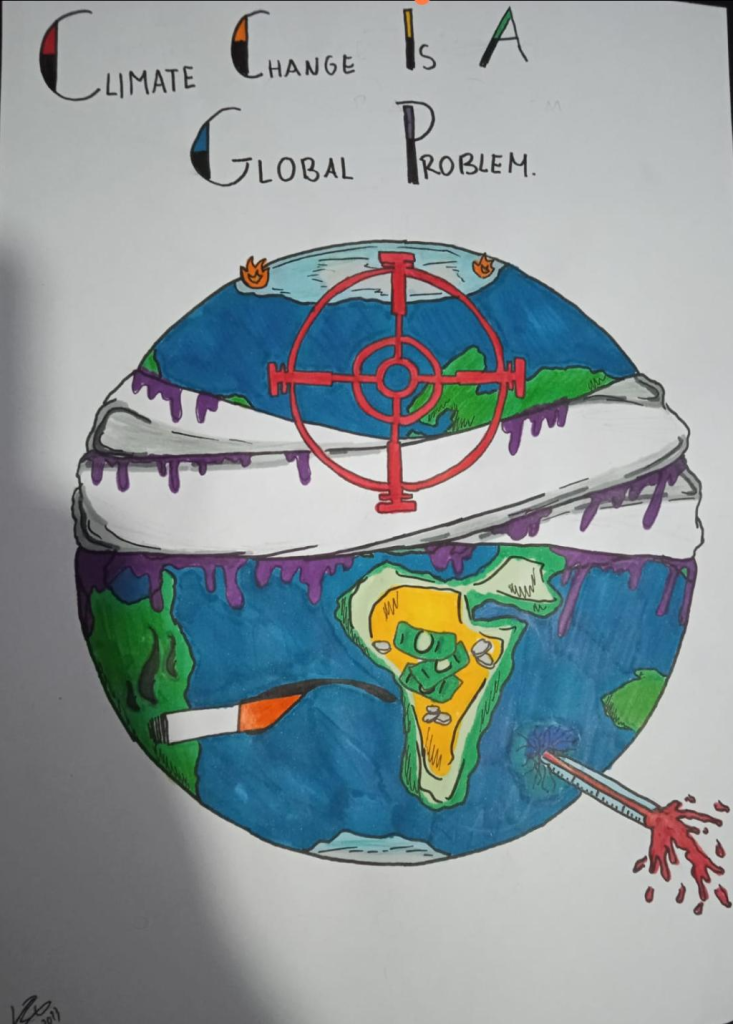Climate Detectives Projects 2022-2023
Project title: “Algo pasa con las algas”
Team: Integrados con el clima
IES José Mª Pereda Santander Spain 25 Student’s age: 12-13 years old
Has there been an increase in temperature in the Bay of Santander in recent years which could influence the growth of the algae Gelidium Corneum?

In class, we have been studying the subject of global warming and the consequences it might bring to our surroundings. We discussed the topic we wanted to investigate and decided to apply the scientific method and analyse whether climate change had already affected the biomass of these algae that were so close to us. This is because we saw them every autumn arriving at the beaches. In addition, some of our classmates’ relatives’ job consists of collecting them.
We started with the following hypothesis: There should be a significant increase in sea surface temperature on the Cantabrian coast of Santander, as it had happened similarly in other seas.
We continued our research by examining the habitat of these algae. Scientists from the Institute of Hydraulics of Cantabria gave us helpful advice throughout our research. We visited their laboratory, and they provided us with the information we needed to start our project.
Gelidium Corneum, vulgarly known as “caloca”, is a red multicellular algae which grows in rocky sub-sea bottoms. It is one of the most characteristic species of the Cantabrian coast.
Its development is closely related to light, temperature, nutrient availability, and waves.
Gelidium fields are subject to significant seasonal variations, their biomass being minimal in the winter months and maximum in the summer months.
Gelidium Corneum is a characteristic species of warm temperate zones. Its tolerance limits are between 10 and 25ºC.
We have analysed the temperature data provided by the Copernicus program, collected in the database developed by the IH (OCLE).
The Sentinel-3 mission consists of 2 satellites equipped with instruments to measure the surface temperature of the seas.
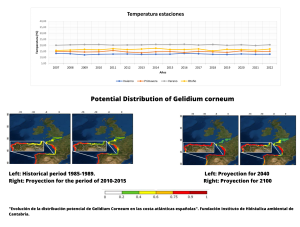
With the OCLE database, we have had access to temperatures from January 1, 2007, to December 31, 2022. We have developed several graphs in which we analyse the data using Excel.
Given that biomass’ volume varies according to the seasons, we deemed more convenient to work with the temperature graph divided by seasons.
When analysing the graph of seasonal temperature variations, we see that there is still no significant increase in temperature in recent years on the Cantabrian coast near Santander. We can sense a tendency to increase in recent years, but it is yet not very significant.
Next, we studied the variation of the volume of biomass of gelidium. For which we used the database of presence of this algae on the entire north coast.
We have not been able to quantify the population of Gelidium on our shores, as we have only had presence or absence data along the entire coastline.
IH has developed a model of temperature and distribution of G. corneum, which covers the entire north coast. Using past data, they have made a population prediction in different climate change scenarios.
On the first map, we see with presence data from 1985 to 1989. The second map shows a representation for the period 2010-2015 and it can be verified with data that it is well done.
The following two maps use this representation to predict what might be the presence of gelidium in a climate change scenario in 2040 and 2100.
We were able to make the prediction of a shift of Gelidium towards the West, from the Bay of Biscay to Galicia, which corresponds to the prediction of an increase in temperature of the sea from East to West.
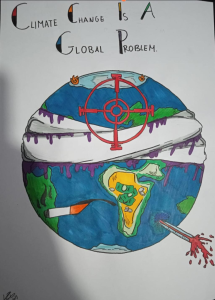
In this project, the impact of pollution on biomass and the two other factors that have an important influence on its development remain to be studied. We have been very interested in the subject, so we would like to continue studying it the next school year and present again our results.
Gelidium’s main threats are pollution, its commercial exploitation and climate change.
The problem of illegal extraction of the algae is extremely severe for the time being, as it is carried out in a wild, uncontrolled way, without allowing the areas in which it is collected to be recovered. There are some regulations of the Government of Cantabria that limit and control their extraction, however, they have been deemed insufficient as still many people do it furtively.
This species is extremely valuable because of its use in the food industry and in cosmetics. This is because it is the main source of Agar-Agar, a crucial ingredient used in both areas.
The aim of this work and its in-depth, detailed scrutiny is to draw attention to the danger of global warming. Also, we highlight its consequences in climate change and how they might affect the maintenance of the ecological balance. We believe that the urgent change of attitude of the population begins with awareness. Which is intimately related to a necessary knowledge of what happens around us, especially in our surroundings. We would like to cause a change in mindset for people to shift to more sustainable lifestyles.
Projects are created by the teams and they take the full responsibility of the shared data.
← All projects


